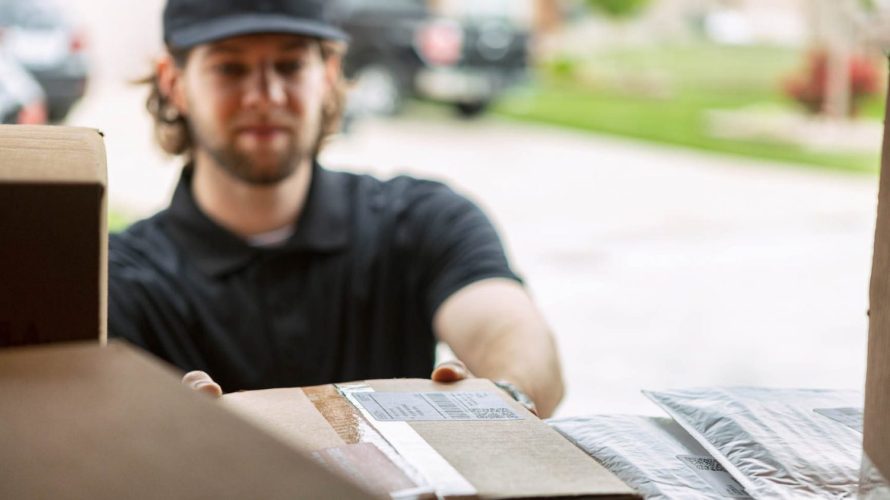Amazon has set a high bar for last-mile fulfillment with two-day shipping, delivery flexibility, and a huge fleet of trucks. It’s hard for most retailers to keep up. But it’s what customers expect: Just recently I found myself obsessively checking my order status on items for an upcoming trip after a third day passed with no box at my doorstep.
Of course, the pandemic put us all in our place with shipping delays that were outside of everyone’s control. Retailers quickly set up store fulfillment options and partnered with local carriers to continue getting goods to customers. Now, customer expectations have grown for even more choices that meet their needs at the last mile.
Here’s how brands can meet these expectations for every order.
1. Trigger fulfillment by location
Many companies still rely on technology systems that were never built for the last mile. They are riddled with legacy processes and siloed data that end up turning fulfillment into a guessing game both for the retailer and the customer.
To course-correct, a flexible order management system (OMS) streamlines the entire process. This once-forgotten, back-office system has entered the forefront as the secret sauce that can help you punch above your weight in fulfillment.
Modern order management works like this: Retailers get an accurate view of inventory to inform shipping origin, whether it’s across warehouses, distribution centers, brick-and-mortar stores, or a third party. When a shopper places an order, the OMS instantly triggers fulfillment according to their preferences — whether it’s expedited delivery or buy online, pick up in store (BOPIS) — and their location. This helps not only get products to customers faster, but also lowers shipping costs because it sources inventory strategically. This could mean by closest proximity, cost, or another factor that supports the success of both your business and the customer.
Announcing the Salesforce and FedEx ShopRunner Partnership
Enable two-day shipping and easy returns, optimize supply chain costs, and increase fulfillment efficiency.



2. Stay transparent with customers
Imagine you’re a customer and you need a last-minute gift for a housewarming party. You go to your favorite brand’s storefront to pick out a marble cutting board and wine glasses. But you can’t figure out if the items will arrive on time. The site doesn’t say if they are in stock or what your delivery options are.
You can’t wait, so you go to another brand’s site and see similar items ready for free, same-day, curbside pickup at the nearby store. The choice is clear.
With a flexible OMS, data is constantly updated to reflect accurate inventory levels and location. This prevents sell-throughs, overstocks, and disappointed customers.
At the same time, the system provides transparency at every step in the fulfillment process. Is the order being picked and packed? Is it on its way? Is there a shipping delay? Your teams and customers can see what’s happening in real time. If a shopper reaches out to customer service with a request to update their order, the system is simple to use, so the agent can see the order status and make adjustments from a single console.
3. Integrate with third-party shippers
To give customers your most accurate times of arrival, you need even tighter integrations with third-party logistics (3PL) carriers. An OMS with robust and open API capabilities lets you integrate easily with a variety of partners so that you can compete with the likes of Walmart, Target, or Amazon. The Salesforce Fulfillment Network — an integrated ecosystem of partners — helps connect every step in the post-purchase journey, from shipping and tracking optimization to fulfillment, and beyond.
For example, Bringg connects you with true last-mile carriers such as Uber and DoorDash. That enables deliveries within hours or even faster, with complete transparency for customers on where their order is every step of the way.
A partner like Narvar helps you grow customer retention with engaging post-purchase order tracking, messaging and returns experiences. Deliver personalization through customizable customer messaging and tailored interfaces driven by data intelligence to turn every touchpoint into an opportunity.
And if you don’t have physical stores, your business might work with an end-to-end logistics partner like Stord. You handle front-office tasks and transactions, while Stord owns distribution centers, fulfillment, and delivery. A partner like Zenkraft aggregates carriers — large ones, small ones, and local ones across the globe. Zenkraft lets you find a carrier that can take the package to its final destination. Plus, Zenkraft is built on the Salesforce platform, so it integrates directly into the order management console.
4. Be flexible to different circumstances
During peak periods such as the holiday season or a flash sale, store associates might not have time to fulfill online orders. A flexible OMS allows you to temporarily turn off fulfillment options offered such as buy online, pick up in store and curbside pickup.
You can also change when the fulfillment process starts — when the order is created or after a fraud- or age-verification check, for example. Or you might choose to use your loyalty data to identify VIP customers and reward them with exclusive access to more inventory or faster delivery.
5. Get smart about supply and demand
Artificial intelligence (AI) is poised to improve last-mile fulfillment even more, as carriers use it to predict and prepare for delivery demand. AI will also optimize order management solutions by anticipating peak days and ensuring inventory is staged in the right locations.
Fulfillment can also trigger new marketing efforts. A customer who receives the new sofa they ordered gets a personalized communication suggesting matching end tables or chairs. Plus, if there are matching pillows in an abandoned shopping cart, a friendly reminder with a discount may then show up in their inbox promoting the purchase. That’s one more way to make shopping even easier and increase the convenience consumers crave.
Speed through the last mile
You sweat every detail of ushering customers to your storefront — and spend countless hours of time and resources to provide a world-class customer experience. Don’t let it all fall apart at the last mile. Intelligent and flexible order management can make your last-mile fulfillment quick, reliable, and transparent — just like that of the retail giants. It eliminates the slowdowns caused by siloed data, and unleashes the most advanced solutions every step of the way.
Discover more benefits of flexible OMS
Let your buy button launch an amazing experience that builds brand loyalty.































